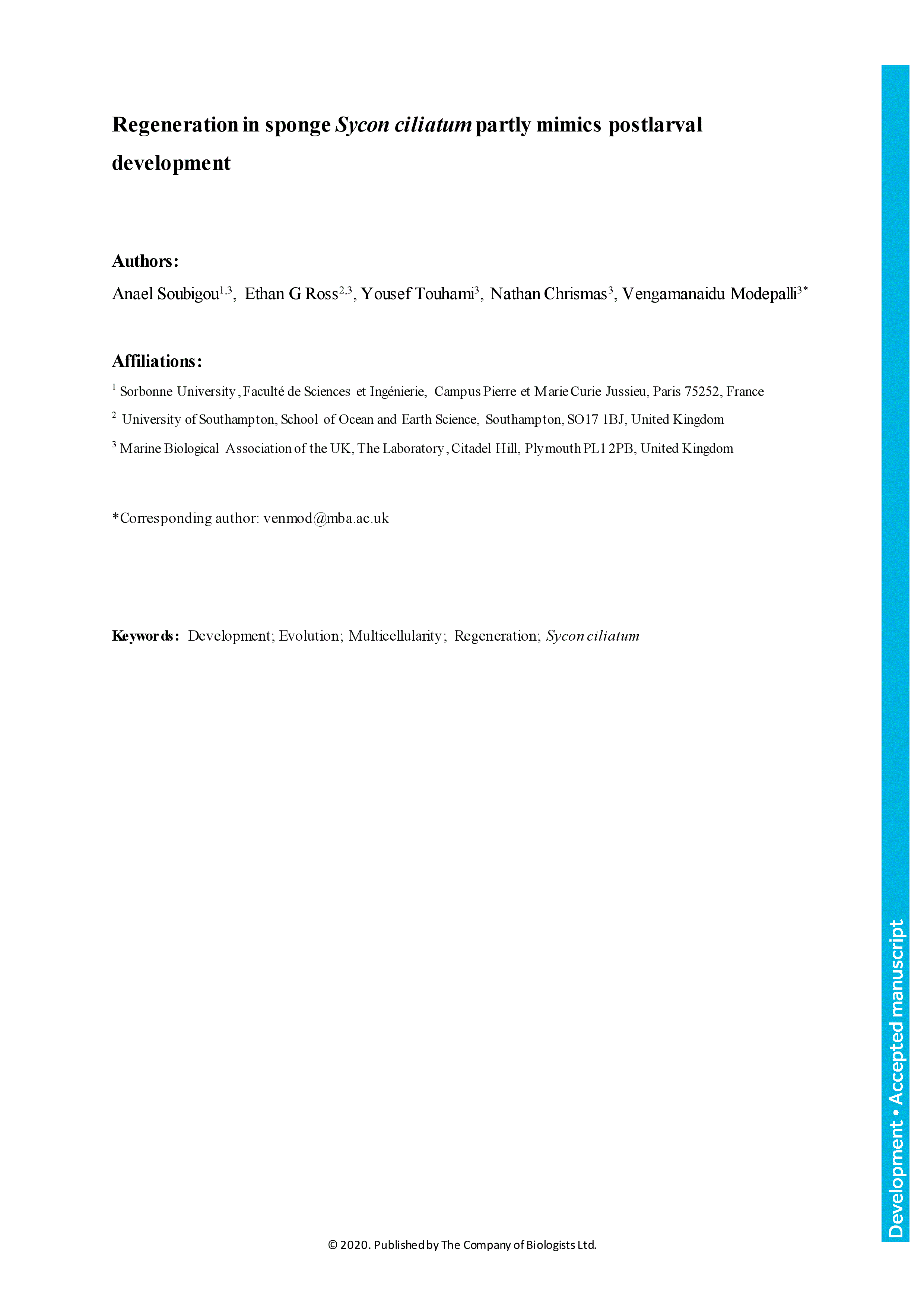Somatic cells dissociated from an adult sponge can re-organize and develop into a juvenile-like sponge, a remarkable phenomenon of regeneration. However, the extent to which regeneration recapitulates embryonic developmental pathways has remained enigmatic. We have standardized and established a sponge Sycon ciliatum regeneration protocol from dissociated cells. From the morphological analysis, we demonstrated that dissociated sponge cells follow a series of morphological events resembling postembryonic development. We performed high-throughput sequencing on regenerating samples and compared the data with regular postlarval development. Our comparative transcriptomic analysis illuminates that sponge regeneration is equally as dynamic as embryogenesis. We find that sponge regeneration is orchestrated by recruiting pathways like those utilized in embryonic development. We further demonstrated that sponge regeneration is accompanied by cell death at early stages, revealing the importance of apoptosis in remodelling the primmorphs to initiate re-development. Since sponges are likely to be the first branch of extant multicellular animals, we suggest that this system can be explored to study the genetic features underlying the evolution of multicellularity and regeneration.
Regeneration in sponge Sycon ciliatum partly mimics postlarval development
Currently Viewing Accepted Manuscript - Newer Version Available
Anael Soubigou, Ethan G. Ross, Yousef Touhami, Nathan Chrismas, Vengamanaidu Modepalli; Regeneration in sponge Sycon ciliatum partly mimics postlarval development. Development 2020; dev.193714. doi: https://doi.org/10.1242/dev.193714
Download citation file:
Advertisement
Call for papers: Uncovering Developmental Diversity

Development invites you to submit your latest research to our upcoming special issue: Uncovering Developmental Diversity. This issue will be coordinated by our academic Editor Cassandra Extavour (Harvard University, USA) alongside two Guest Editors: Liam Dolan (Gregor Mendel Institute of Molecular Plant Biology, Austria) and Karen Sears (University of California Los Angeles, USA).
Choose Development in 2024

In this Editorial, Development Editor-in-Chief James Briscoe and Executive Editor Katherine Brown explain how you support your community by publishing in Development and how the journal champions serious science, community connections and progressive publishing.
Journal Meeting: From Stem Cells to Human Development

Register now for the 2024 Development Journal Meeting From Stem Cells to Human Development. Early-bird registration deadline: 3 May. Abstract submission deadline: 21 June.
Pluripotency of a founding field: rebranding developmental biology

This collaborative Perspective, the result of a workshop held in 2023, proposes a set of community actions to increase the visibility of the developmental biology field. The authors make recommendations for new funding streams, frameworks for collaborations and mechanisms by which members of the community can promote themselves and their research.
Read & Publish Open Access publishing: what authors say

We have had great feedback from authors who have benefitted from our Read & Publish agreement with their institution and have been able to publish Open Access with us without paying an APC. Read what they had to say.



